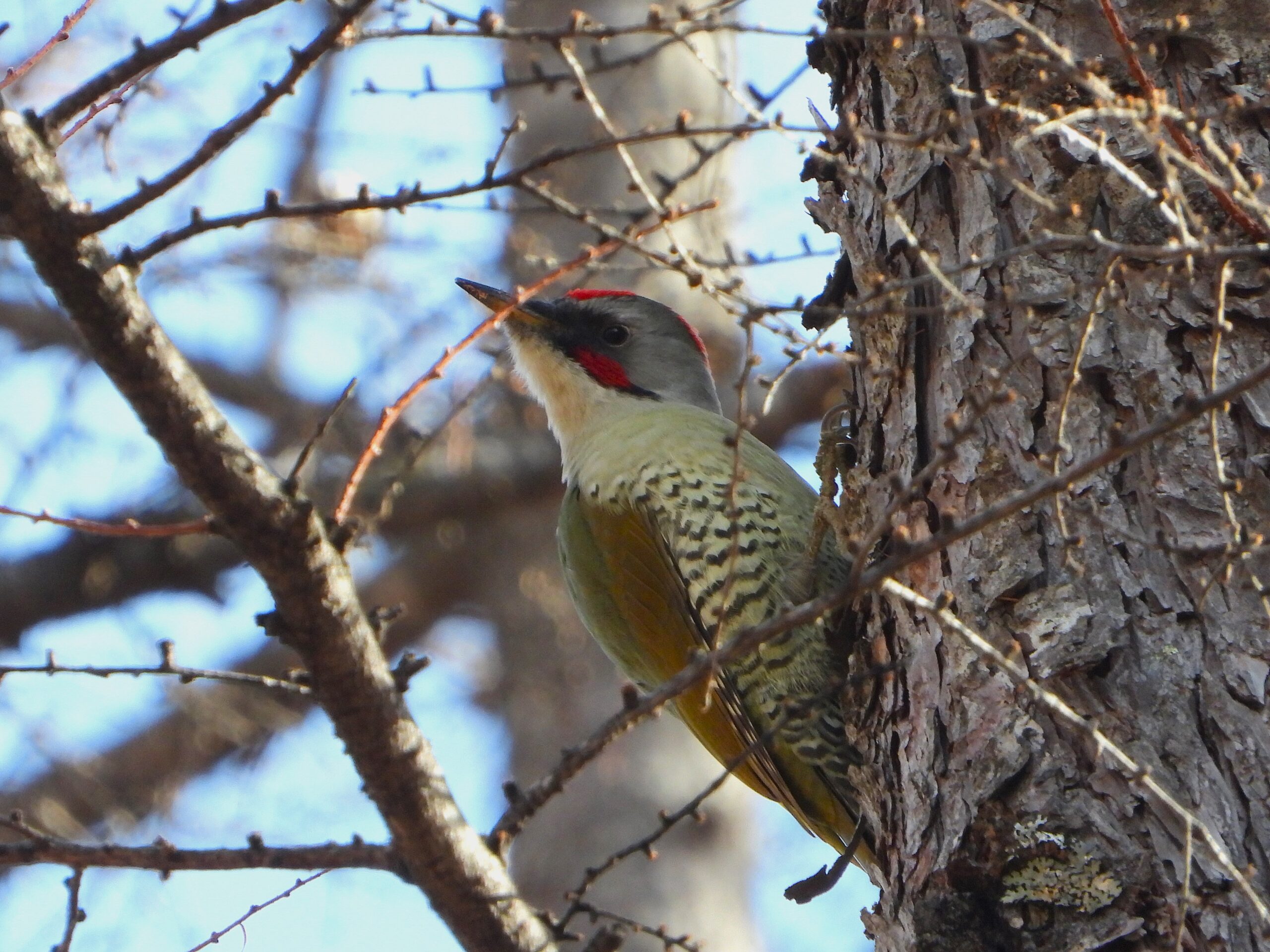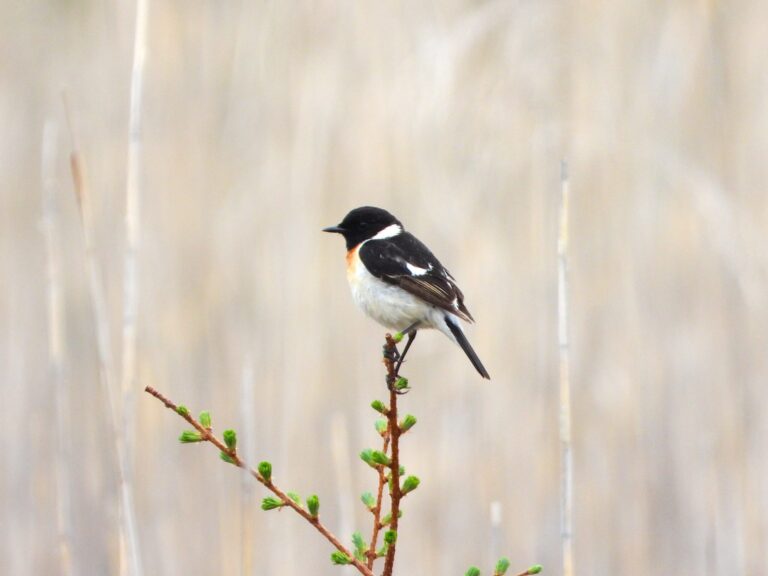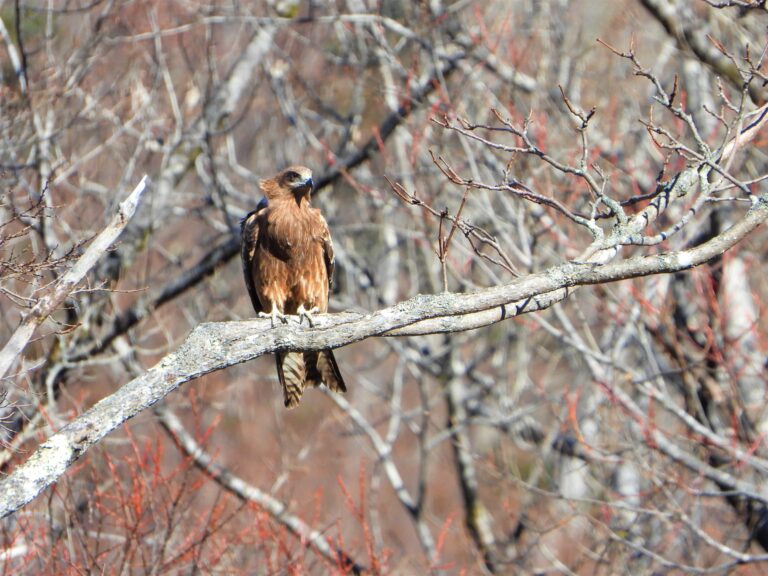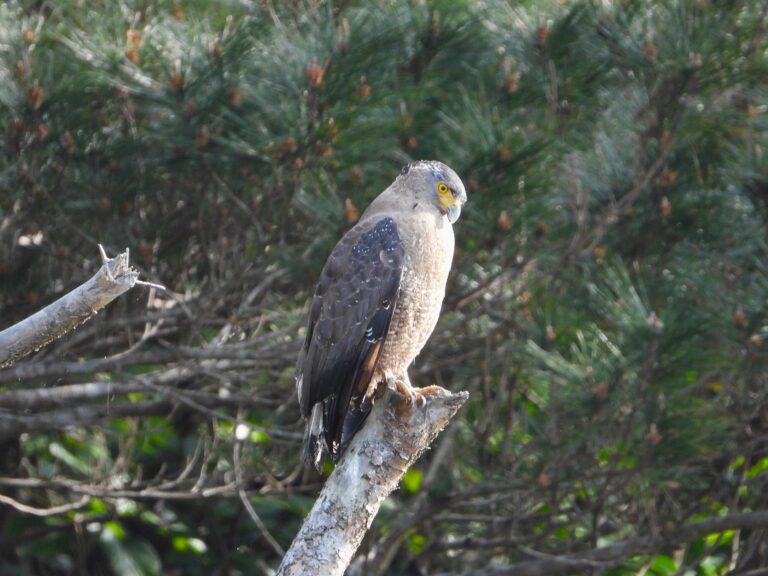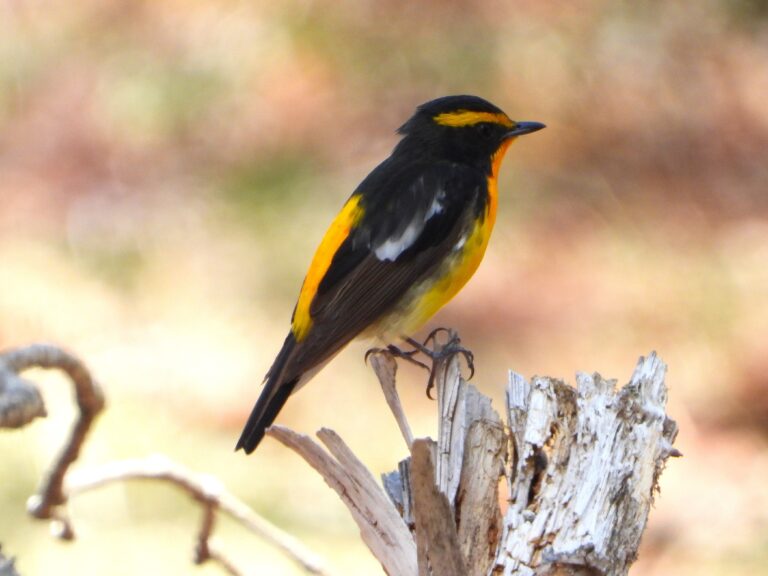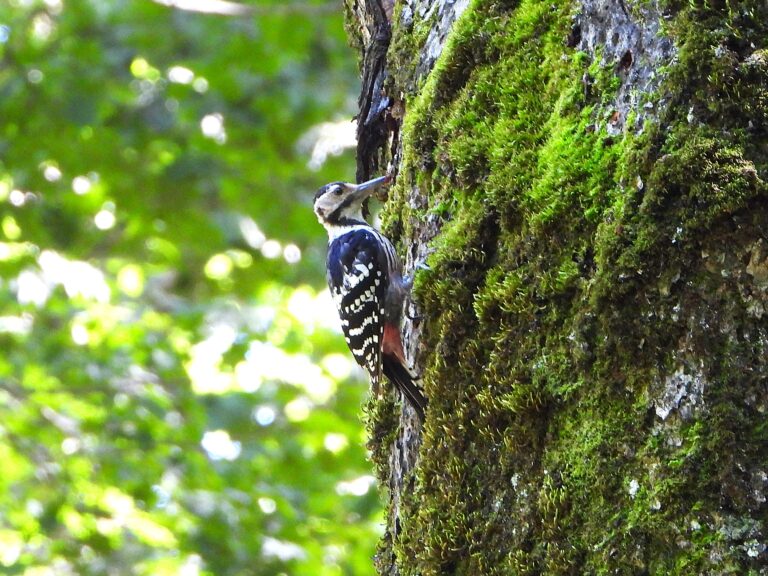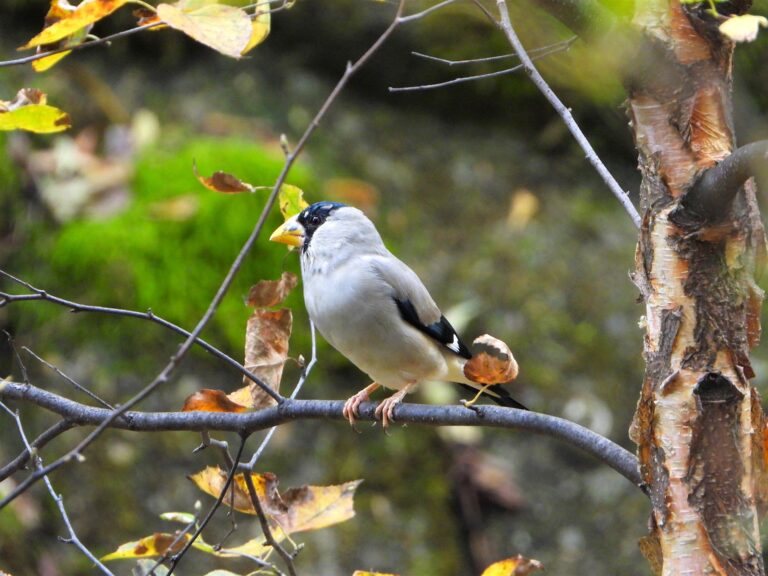Japanese Green Woodpecker (Picus awokera) — Wildlife of Japan
Introduction
The Japanese Green Woodpecker is a medium-sized woodpecker endemic to Japan. With bright green plumage and red markings on the head, it stands out among Japan’s forest birds. Known for its high “pyu-pyu” whistle, this species is a familiar yet special sight in wooded areas and large parks.
Appearance
About 29–30 cm in length.
Males show red from forehead to nape and a broader red malar stripe; females have red only on the nape. The overall color is green above and paler below, with a strong chisel-like bill and stiff tail, climbing trunks in search of insects. The flight is slightly undulating and direct.
Habitat & Distribution
This species is endemic to Japan, found year-round on Honshu, Shikoku, Kyushu, and nearby islands, but absent from Hokkaido (where the Grey-headed Woodpecker occurs). It prefers mature broadleaf or mixed forests, forest edges, riverine woods, and large city parks with old trees.
Where to See in Japan
Kanto: Wooded foothills around Mount Takao and large city parks with mature trees such as Inokashira Park; also Tama Cemetery (Fuchu) or Fujimori Park (Hachioji).
Chubu–Kinki: Low mountain forests of oak and beech; along rivers with mature trees.
Shikoku–Kyushu: Wooded hills, temple forests, and nature parks.
Tips: Not found in small city parks — look for large, tree-rich areas and listen for the high “pyu” whistle before scanning visually.
Behavior
Usually solitary or in pairs. Feeds by probing bark for ants and beetle larvae and occasionally drumming on resonant trunks. It sometimes forages on the ground, especially around ant nests.
Diet
Mainly insects—especially ants and larvae—but also berries or fruits during winter.
Reproduction
Breeds in spring. Both sexes excavate nest cavities in dead wood or decaying sections of living trees (often cherry), then incubate and feed the young until fledging.
Conservation
Classified as Least Concern (IUCN) but showing a slight declining trend. The species relies heavily on old and dead trees for nesting and feeding, so removing such trees can eliminate local populations. Protecting old trees means protecting the Aogera—and the many forest creatures that depend on it.
Author’s Impression
Quiet yet striking, the Aogera is one of Japan’s most charming woodland birds. It rewards patience—learn its whistle, and you may spot it calmly perched on a mossy trunk.

